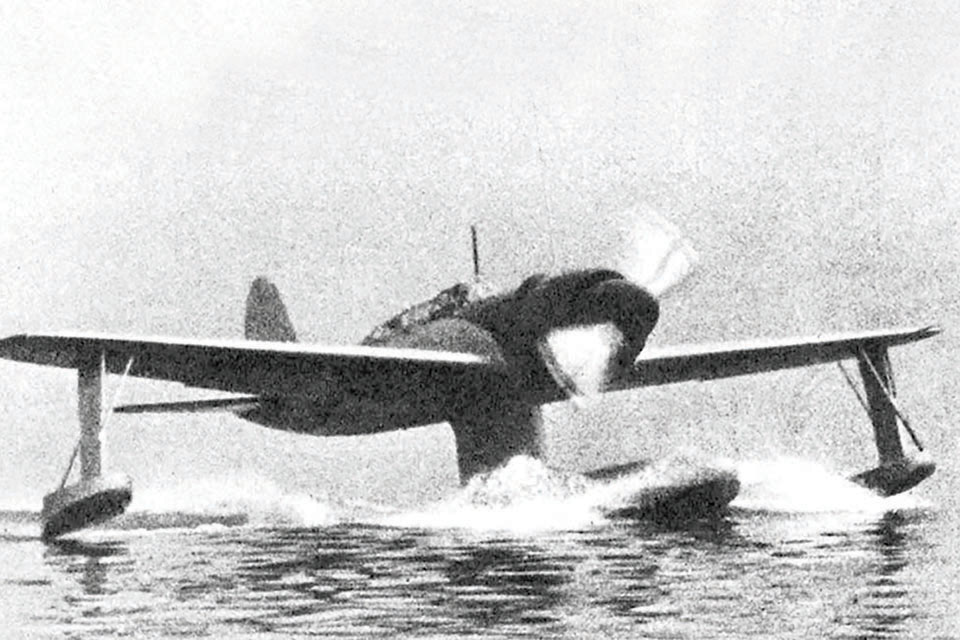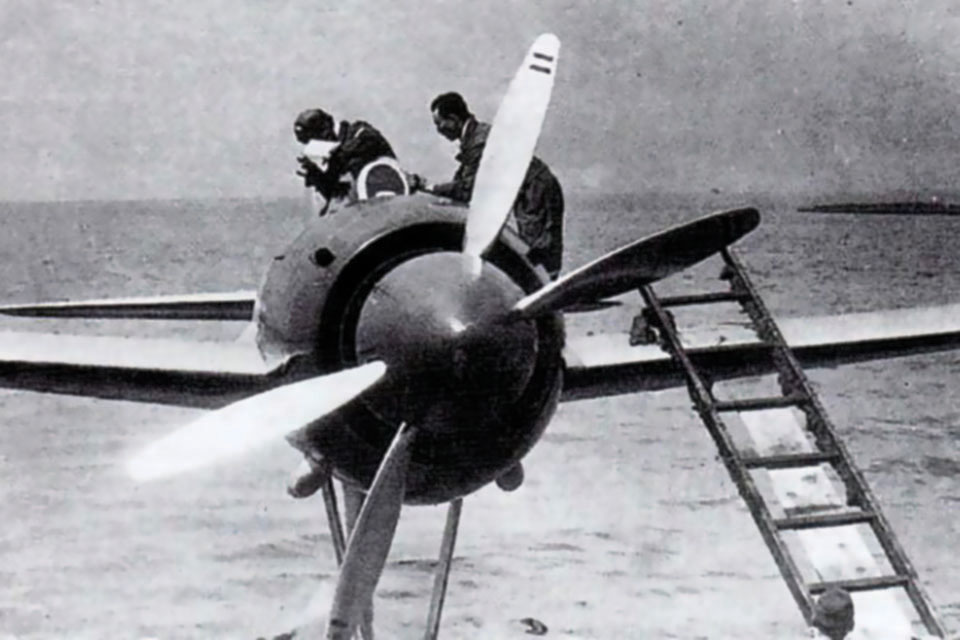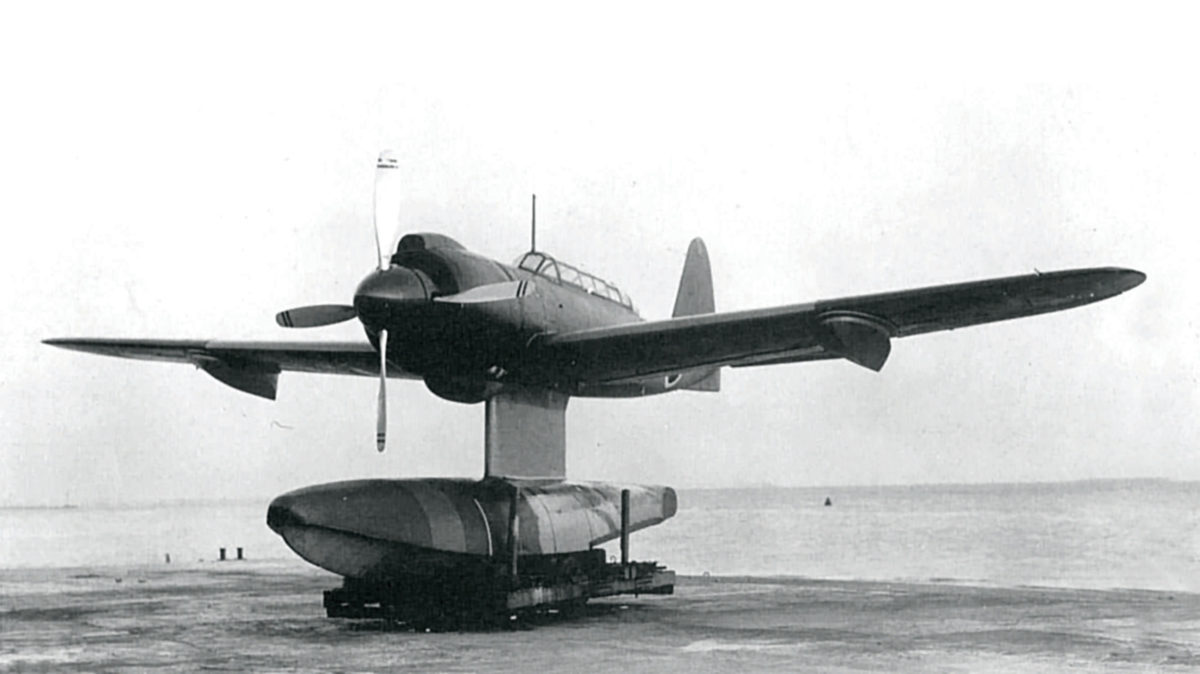During the 1920s and ’30s, the Imperial Japanese Navy became fixated upon how to defeat a numerically superior U.S. Navy if war broke out in the Pacific. Its solution was a defense-in-depth in which the U.S. Pacific Fleet would be whittled down by Japanese submarines, long-range aircraft and destroyers, before finally being destroyed by its Combined Fleet in the western Pacific. Complementing that effort would be aircraft operating from Japan’s island possessions, which combined airfields for landplanes with seaplane bases. The latter were to play host to a more imaginative variety of military floatplanes than were developed by any other nation, ranging from Aichi E13A1 and Mitsubishi F1M2 reconnaissance planes to the dive brake–equipped Aichi E16A1, the submarine-launched Yokosuka E14Y1 and the Nakajima A6M2-N fighter.
An important component of Japan’s attrition strategy was to be coordinated attacks delivered by flotillas of long-range attack submarines controlled by large, fast light cruisers. To assist in locating and tracking the enemy fleet, the cruisers would be equipped with numerous speedy, long-range floatplane scouts. The ultimate manifestation of that strategy was the construction of the special seaplane-carrying light cruiser Oyodo and the development of the equally specialized Kawanishi E15K1 Shiun (Violet Cloud), six of which were to be deployed from that warship.
The E15K was intended to fulfill a 1939 navy requirement for a two-seat, cruiser-based floatplane that could undertake reconnaissance missions of up to 800 nautical miles in radius, in areas where the enemy was expected to enjoy air superiority. A scout seaplane operating in the face of enemy fighters would require extraordinary performance, and Kawanishi applied a great deal of ingenuity to the problem. The resulting aircraft was intended to be among the most advanced of its kind.

First flown on December 5, 1941, the E15K1 Type 2 Model 11 prototype was a relatively compact single-float, two-seat seaplane measuring 38 feet long and with a wingspan of 45 feet 11 inches. Propulsion came from a 1,540-hp Mitsubishi MK4D Kasei 14 14-cylinder radial engine driving contrarotating propellers, the first such propeller installation ever applied to a Japanese warplane. To enhance performance the aircraft’s wings featured a laminar-flow airfoil section and were fitted with retractable wingtip floats. At a cruising speed of 184 mph, the Shiun had a range of 1,820 nautical miles. Its normal maximum speed was 291 mph, but if the crew required even more speed, the plane was designed so the center float could be jettisoned, increasing it to 341 mph.
Unfortunately for the Japanese—but none too surprisingly—development became protracted due to the E15K1’s advanced features, and the project fell behind schedule. Problems with the wing float retraction mechanism resulted in several crashes. Eventually that feature was dropped, and a more powerful MK4S Kasei 24 engine, generating 1,850 hp, was substituted to compensate for the increased drag from the fixed floats.
Six prototype and service trial E15Ks were built and evaluated from 1941 to 1942. Production finally got underway in 1943, but the first operational E15K1s did not enter service until April 30, 1944, when six were assigned to the 12th Reconnaissance Squadron of the 61st Air Flotilla. On June 1 the first of its Shiuns arrived at Palau Island. By that time new Allied fighters of much higher performance had entered service, and to the Japanese crews’ added consternation when under attack, the main float jettison mechanism—which had been wind-tunnel tested, but never tried on an actual airplane prior to production getting underway—did not work.

While scouting aircraft carrier activity in the Bonin Islands on June 15, two E15Ks spotted one of the two American task groups attacking Iwo Jima, but shortly afterward both were shot down by Grumman F6F-3 Hellcats. Two more Shiuns were engaged in an anti-submarine patrol on July 25 when they, too, encountered Hellcats, which shot one down. Lieutenants junior grade Robert L. Straub and Paul K. Heerwagen of VF-14 from the carrier Wasp were credited with downing an A6M2-N “Rufe” (a type easily mistaken for the E15K), while Lieutenant John F. Hutto of VF-19 from carrier Lexington claimed a “probable.”
As the Allied Technical Air Intelligence Units acquired knowledge of the floatplane, they assigned it the codename “Norm” after one of the units’ Royal Australian Air Force personnel, Sqd. Ldr. Norman O. Clappison. By then, however, E15K1 production had been terminated in February 1944, after only nine examples were completed. On August 12, the 12th Reconnaissance Squadron was disbanded. Its commander, Lieutenant Kishoshi Aikawa, reported its floatplanes to be unreliable and requiring excessive maintenance to keep operational. None of the E15Ks were ever assigned to the cruiser for which they had been originally intended.
The E15K1 was among the most advanced seaplanes produced during World War II. Had it been less complex its development might not have taken so long, and it may have been more successful. Ultimately the abnormal Norm became a victim both of its technical sophistication and changes in tactical circumstances, which made the very concept of a reconnaissance floatplane outdated, regardless of the inventive features it sported.
This feature originally appeared in the November 2019 issue of Aviation History. Subscribe here!





